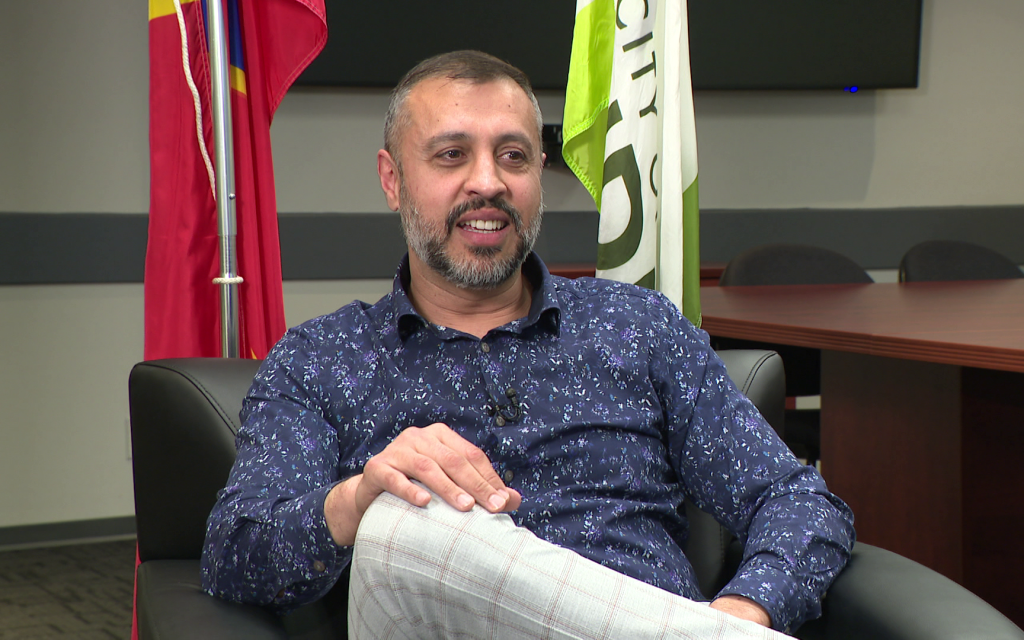Expanded concussion treatment centre highlights need for treatment across the nation
Posted April 12, 2012 8:57 pm.
This article is more than 5 years old.
PITTSBURGH, Pa. – Madison MacDonald can’t remember what happened. All the high school soccer player from the Pittsburgh suburbs knew is that she felt off.
Doctors spent weeks trying to solve the problem. Her symptoms were vague. She was tired and found concentrating difficult. Her schoolwork suffered and basketball practice — which she transitioned to once soccer season was over — could be gut-wrenching.
MacDonald was tested for mononucleosis and treated for swollen blood vessels in her brain. Nothing worked.
Frustrated, her parents brought her to Dr. Micky Collins’ office in a small clinic alongside the Monongahela River a couple of football fields away from the Pittsburgh Steelers’ training facility on the city’s Southside.
Tests revealed a concussion, something that came as sort of a surprise to MacDonald, who couldn’t recall any specific incident that led to the onset of symptoms.
“I was a little relieved, but I was kind of like, ‘a concussion?'” MacDonald said.
It’s a question Collins, one of the leading experts in the diagnosis, treatment and rehabilitation of concussed athletes hears all too often.
It’s why as proud as he is of how far the UMPC Sports Medicine Concussion program has come since it opened in 2000 — growing from one office to a 3,500 square foot facility on a converted rooftop complete with nine examination rooms and a 24-person staff — he’s only too aware of how far there still is to go.
“We need one of these in every city,” Collins said.
There’s not, which is why people — including dozens of professional athletes, including Pittsburgh Penguins star Sidney Crosby — flock from all over the country to Collins’ office to participate in cutting edge treatment.
Collins estimates by 2014, the practice could see 25-30,000 patients a year, a small fraction of the estimated 1.8-3.6 million athletes — many of them high schoolers — who are diagnosed with concussions every year.
It’s not an epidemic, Collins said, but the evolution of both science and awareness. Athletes are no longer being told to “walk it off” after they display symptoms, and the tests have gone far beyond smelling salts and “how many fingers I’m holding up.”
The clinic follows patients every step of the way, from the initial assessment to vision and physical therapy. The goal is to take some of the fear out of the injury.
“A concussion is not the boogie man,” Collins said.
Collins believes the symptoms can be “manageable” if treated properly. He and Dr. Mark Lovell developed the ImPACT test now used by many professional sports leagues, including the NFL, to assess whether a player is dealing with a concussion.
MacDonald, now 18, has been visiting the clinic for over two years after sustaining a second concussion — this one quite obvious after getting slide tackled during a game — last fall.
MacDonald estimates she’s at about “90 per cent,” but her day-to-day life is much better .The symptoms, including the “fogginess” that is perhaps the issue that lingers the longest, are now largely gone.
The clinic focuses on the vestibular system, a network that allows the brain to process and integrate space, motion and vision. Collins worked extensively with Crosby during his comeback from a concussion sustained in January 2011 and likened Crosby’s vestibular system to that of a Ferrari.
Most people aren’t high-performance sports cars, but the system is designed to work the same way regardless of class, etc.
A team of physical therapists works with each athlete in sports-specific exercises, looking for various symptoms as the intensity increases. A hockey player may jump on a trampoline, then do some light stickhandling before working on a slider that mimics skating.
The goal is to gradually get the vestibular system back on line. The timetable is different for each athlete.
Yet Collins remains optimistic that with proper treatment athletes can return to the field without the danger of recurring issues. The science isn’t quite there yet, though he wants to make his clinic “ground zero” for research.
The staff has already published nearly 100 research papers on the subject and regularly holds conferences to educate other doctors about the issue.
“This isn’t something you specialize in in medical school,” Collins said.
He’s hoping the clinic can help fill in the gaps and lead the charge into better treating a still sometimes mysterious condition.
“There should be a program like this everywhere,” he said. “There are so many injuries happening, if you build it, they will come.”










